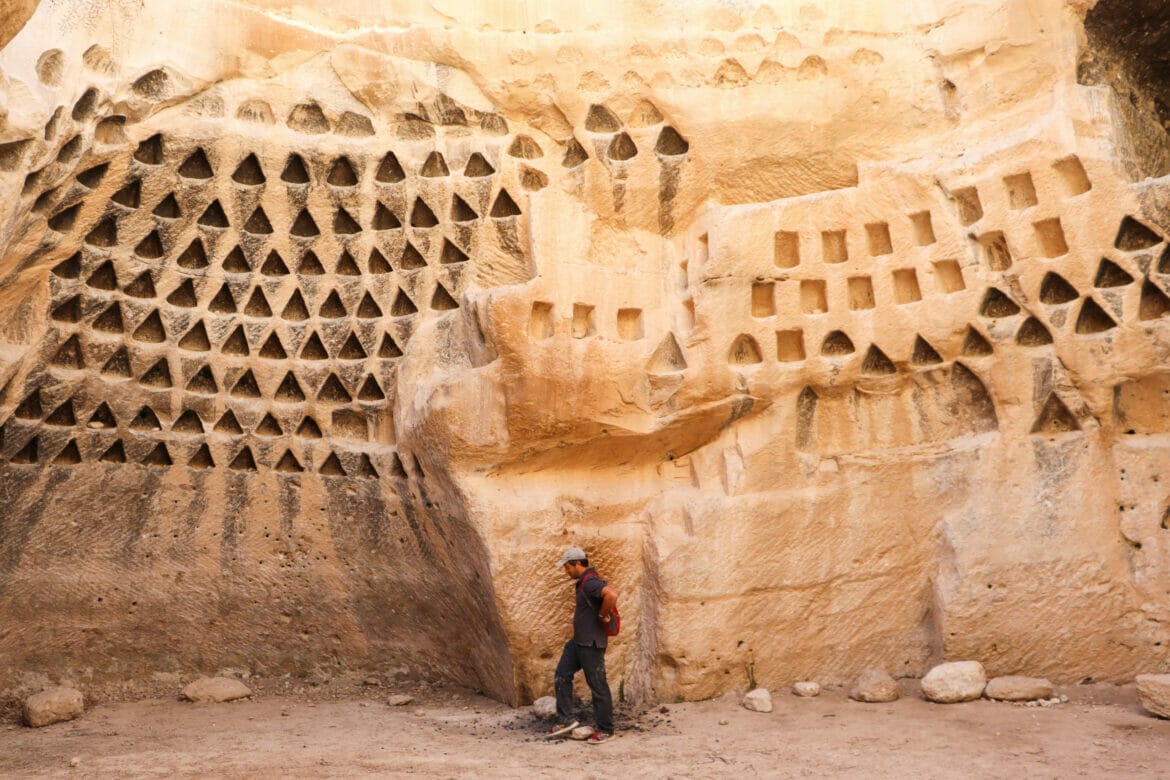
| Trail Map | Terrain View | |
| Distance: 3km | Time: 2 hours | Difficulty: Easy |
| Ascent: 40m |
Israel: the land where history and nature are irrevocably tied together. In this country, if you go on a hike of any great length, you’re bound to come across an ancient fortress, an old tomb, or even the remains of a crumbling city.
But there’s one piece of history that you actually have to go searching for: underground caves.
In many places around Israel, there are networks of underground caves that you can hike through. And some that you can merely slither through.
This week we went on a trek through the Midras Ruins in Park Adulam, near Beit Shemesh. The mix of beautiful, low-key nature and incredible caves on the trail turned our excursion into a real adventure.

While some may be uncomfortable with the thought of crawling through narrow caves, there are plenty of other sights on the way that makes this hike one worth taking.
Here’s what we saw on our journey:
I Think We’re Alone Now
We pulled into the parking lot next to a bus full of American teen hikers – which was kind of a surprise for this random day in October. No matter. We walked behind them, up the blue trail and enjoyed listening to the historical explanation given by their guide.
We were in an area that was inhabited during the period of the Second Temple, until the time of the Bar Kochba revolt. The underground caves were carved out by rebels evading the Romans.
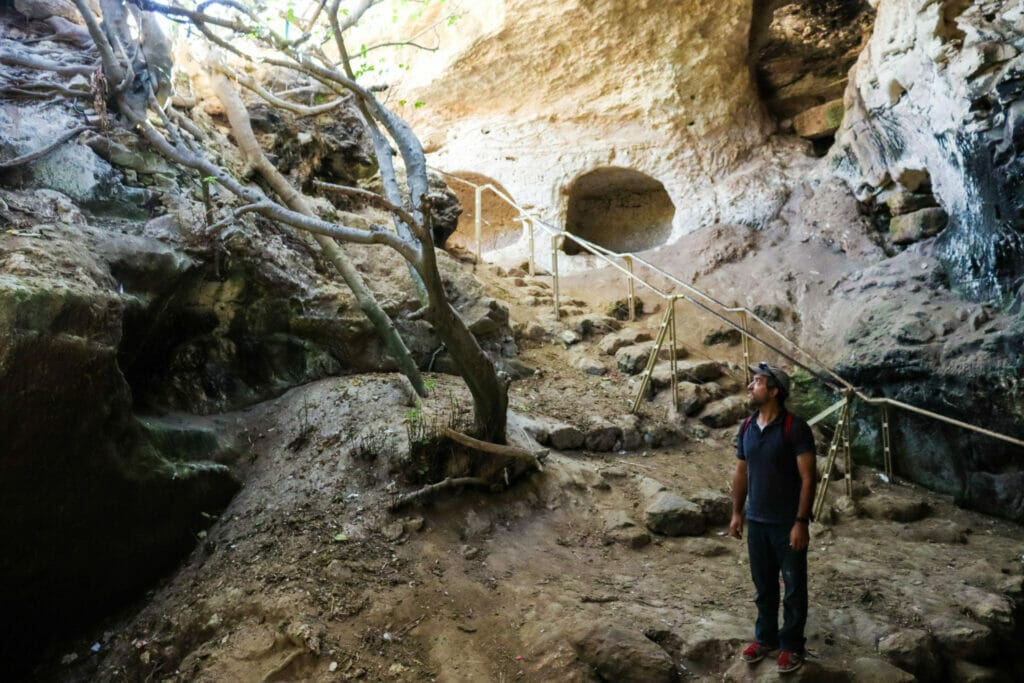
After a three-minute walk, we had already arrived at the first cave. Thankfully, the group went off in a different direction.
We climbed down the steps into the dark expanse of cave, past the tree that covered the entryway. It wasn’t immediately clear where the tunnel through the cave began. But as our eyes adjusted to the dimness we saw it: a small opening in the side of the cave near the top.
We fastened our headlamps, secured our gear, and got down on our hands and knees to plunge into the darkness ahead.
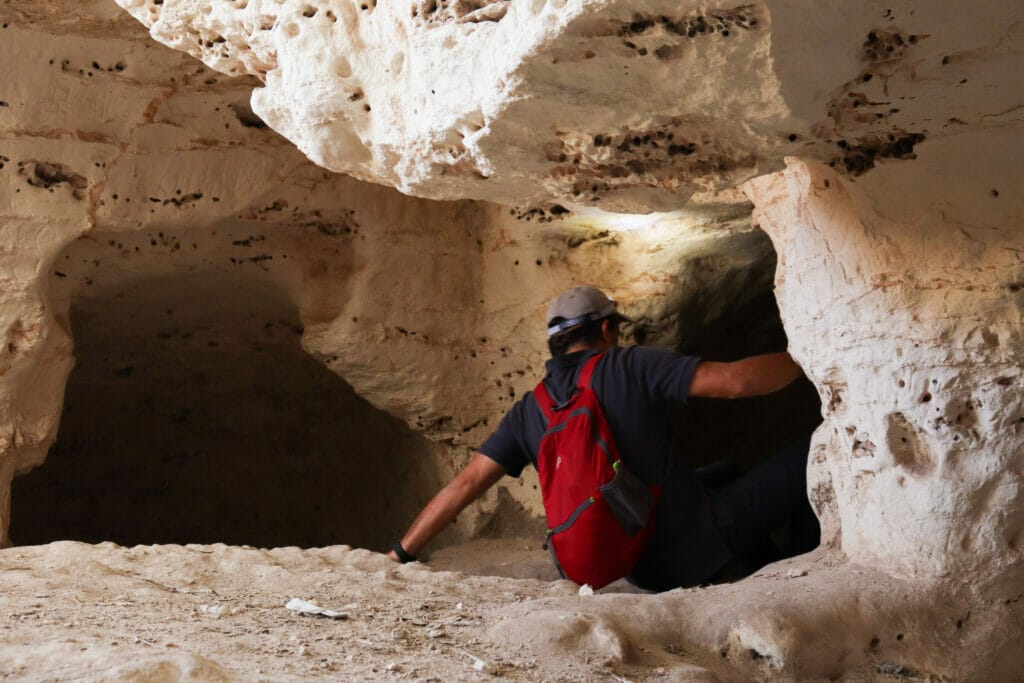
Life’s Playground
There was one playground I loved as a child that I’ll never forget: Lafraniere Park in New Orleans. Right in the center of the park was an endlessly tall ladder covered in a dark narrow tunnel. You never knew what you would find inside.

As we crawled through this crazy cave, those childhood memories came flooding back.
We inched our way through, not always sure which direction to turn. Some of the tunnels seemed to end abruptly right in the middle. But then we would look up above and find a way forward.

In between the tunnels were small chambers, with more pathways traveling off in different directions. The proper path was always marked with small reflective arrows. Our headlamps were essential. We turned them out a few times, just for fun, and were immediately engulfed in thick darkness.
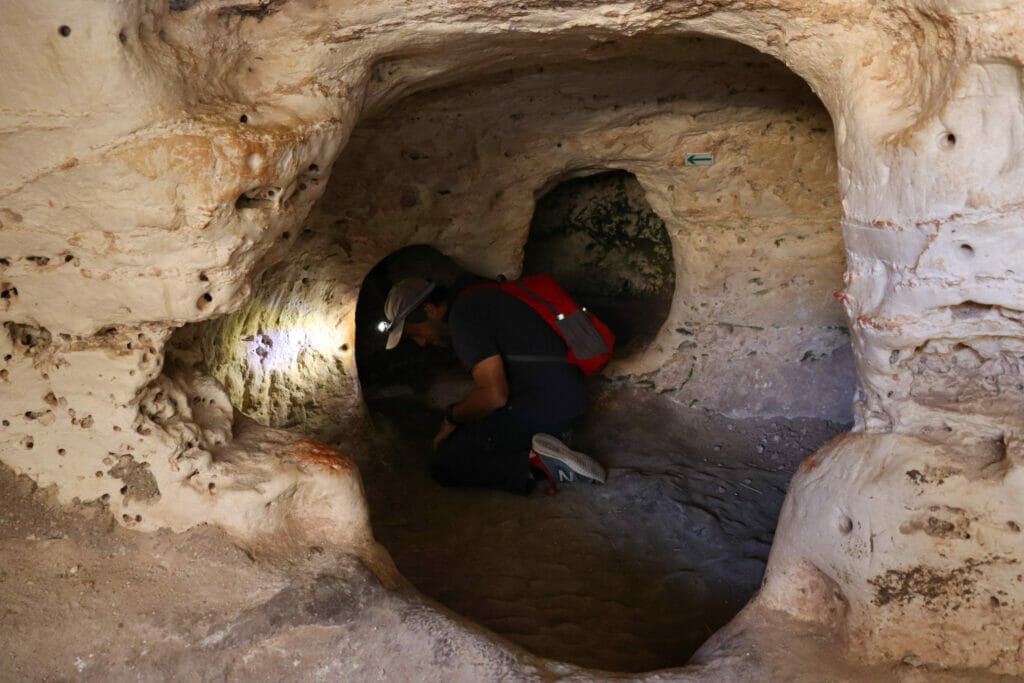
In one or two spots, we actually had to get down on our bellies and slither. The cave walls were smooth and dusty – we didn’t have to worry about scrapes or scratches.
Twenty-five minutes later, we emerged from the dark tunnels back into the half-light of the outer cave.
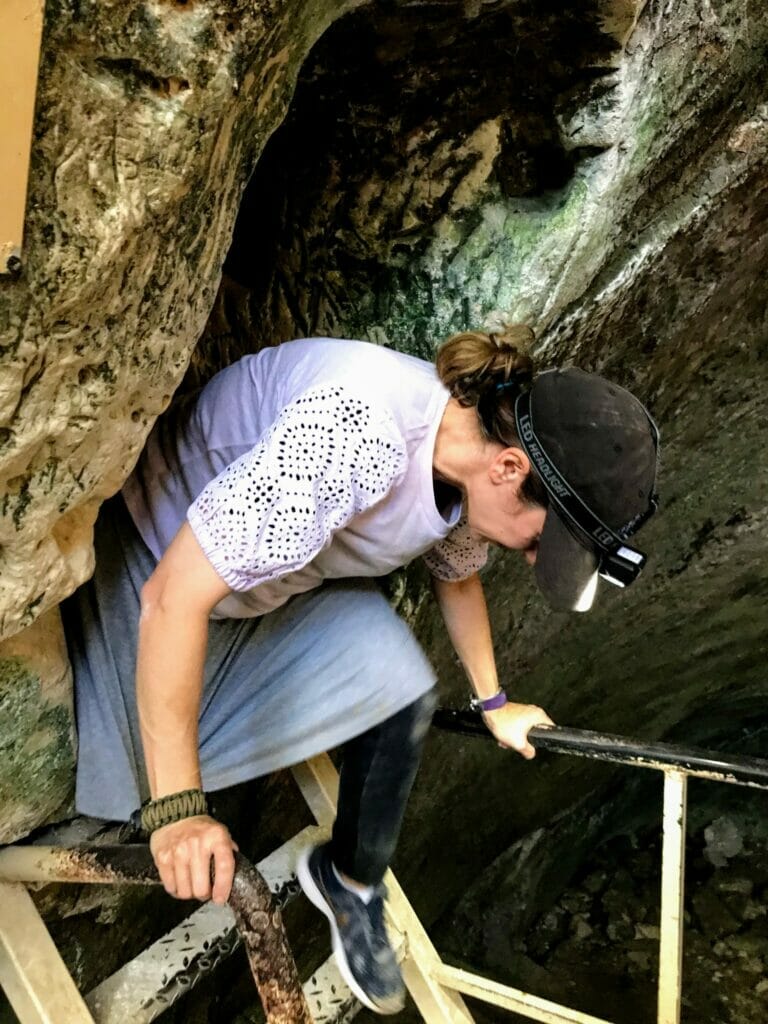
Move Out
We climbed the stairs into the harsh, mid-morning light. For now, we were going to be hiking through nature’s terrain for a while: low shade trees and rocky pathways.
We walked for a bit along the blue trail, then chose one of the many perfect spots on the path to stop for coffee. It was kind of surprising that the nature on this ruins trail was also beautiful. It was a nice place to walk even without the super cool cave.

After breakfast, we continued along towards an ancient pyramid (the only one of its kind in Israel). We passed by the remains of an old synagogue and then reached a burial cave.
On went the headlamps again as we climbed into this old structure. This cave was like a live pop up story book. We read about the open graves inside, where they would leave corpses to decompose. Once just the bones remained, they would place them into a small stone coffin (about the length of a thigh bone).
And right inside, we saw the graves, the coffins, and all the carving you would expect to find in an underground tomb – preserved in the darkness for all to see.
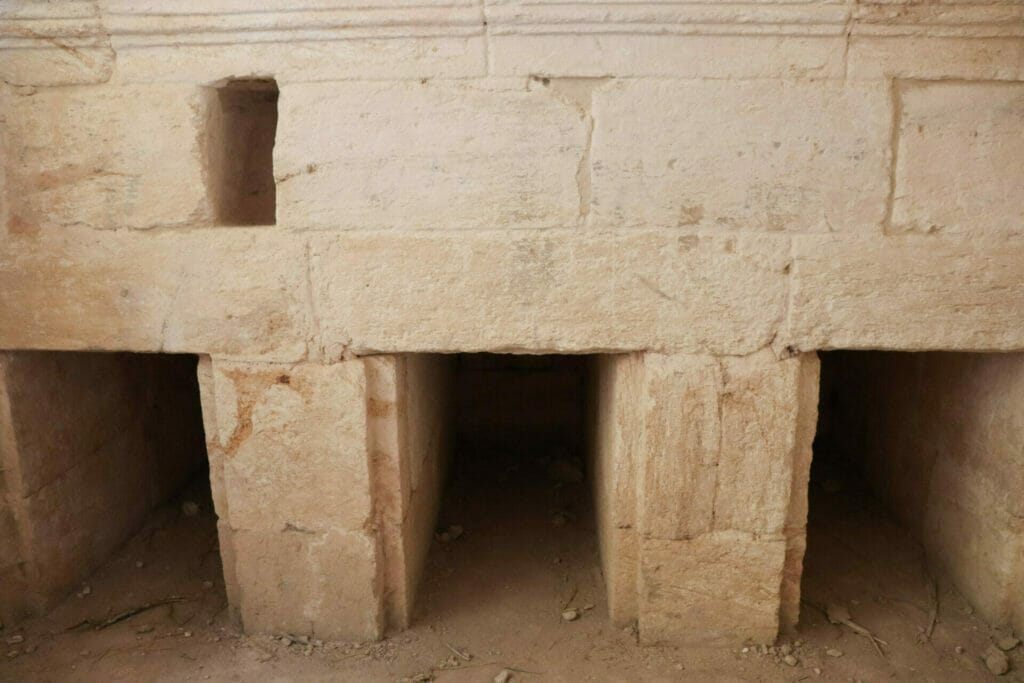
Beauty in the Details
After walking a bit further on the blue trail, we turned onto the green trail. First stop on the path – a beautiful, well preserved, intricately detailed columbarium (once home to hundreds of pigeons).
We’ve seen a few of these structures in Israel before. But never one that was quite so well preserved and beautiful. Birds flocked to the entry of the columbarium, still attracted to nest in its shadows.

We climbed down into the darkness and emerged in a geometrical wonder. Circles, squares and triangles lined the walls – who knows what all the different shapes were once used for? To us, it was simply beautiful – and impressive and thought provoking. This columbarium completed the picture of history alive all around us.
Mysteries Uncovered
After the columbarium, it was a short walk back through nature towards the trailhead. Though we hadn’t seen another soul on our trail walk, there was a group up ahead just coming out of the cave, echoing with excitement and laughter.
It’s kind of hard to believe that we had never been to this spot before – only thirty minutes away from our home. From nature to history to the thrill of discovery, the trail at Midras Ruins has all you need for an incredible morning in the outdoors.

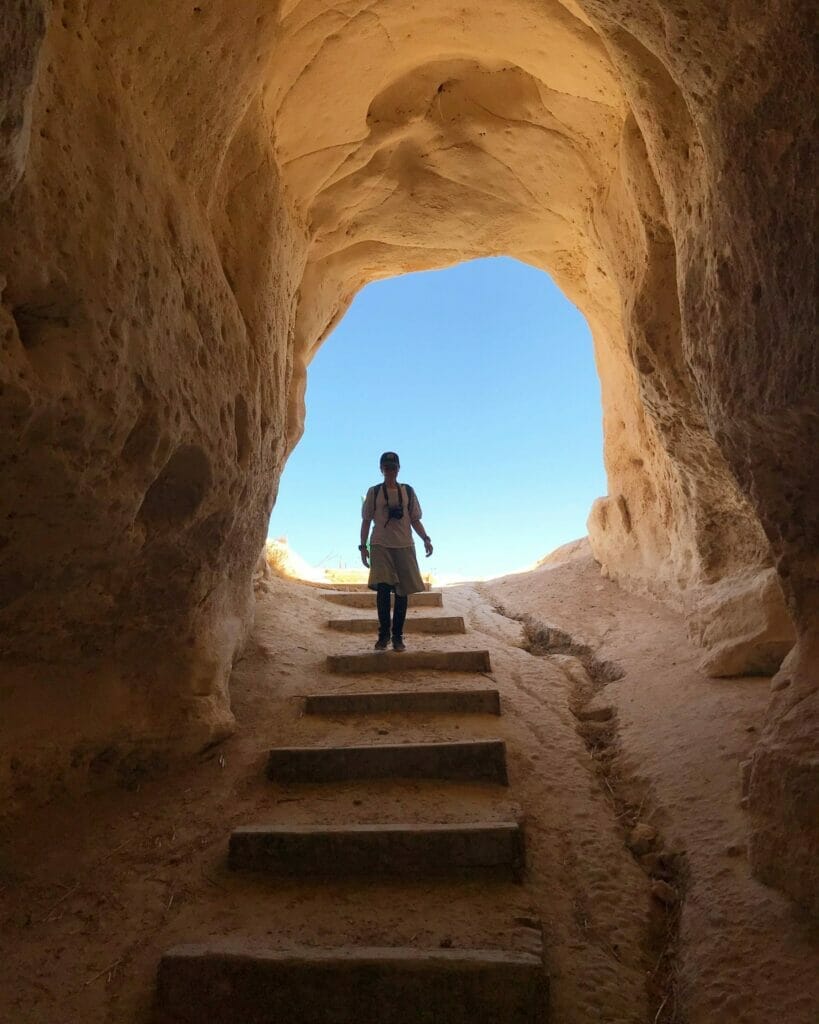
Hikers’ Notes:
Loved this trail! Midras Ruins is a great choice for pretty much any time of year – we went on a hot day in early fall, and the scenery was still pretty. I’d guess its twice as beautiful in the springtime after the winter rain.
The caves and antiquities are so, so cool. I think this is one of the neatest nature/history walks I’ve been on. Everything is well labeled and well preserved.
Re: the crawl through the cave. It’s definitely not for everyone. It’s not that it’s hard – just that some people might find squiggling through long dark passageways a little bit scary. I know that some of my kids would love it, and some would just hate it. But the good news is, there’s a “waiting cave” right next to the main cave. And even if there are members of your hiking party who don’t want to take part in the tunnel crawl, they can still see and explore the other caves and sights on the hike.
Make sure to get a headlamp if you want to do the Midras Cave. They’re available in every hardware store. You can use a regular flashlight for the other caves. Also, wear long pants so your knees don’t get scraped up.
Right near this site, you can hop on over to The Itri ruins, another amazing archeological site nearby. See the full post for more details.
Find everything you need for navigation in the table up top. Or read my guide to using these posts for more info on how to navigate.
Trail map from Amud Anan.
Trail Notes:
To follow the path – from the parking lot follow the blue trail to the left. First explore the cave. Then follow the blue trail (keeping a close eye out for trailmarkers) through nature and various antiquities. When you reach the green trail, make a right towards the columbarium. After the columbarium, continue following the green trail to the blue. Then follow blue back to your car.
Questions about this trail? Let’s hear them in the comments below!
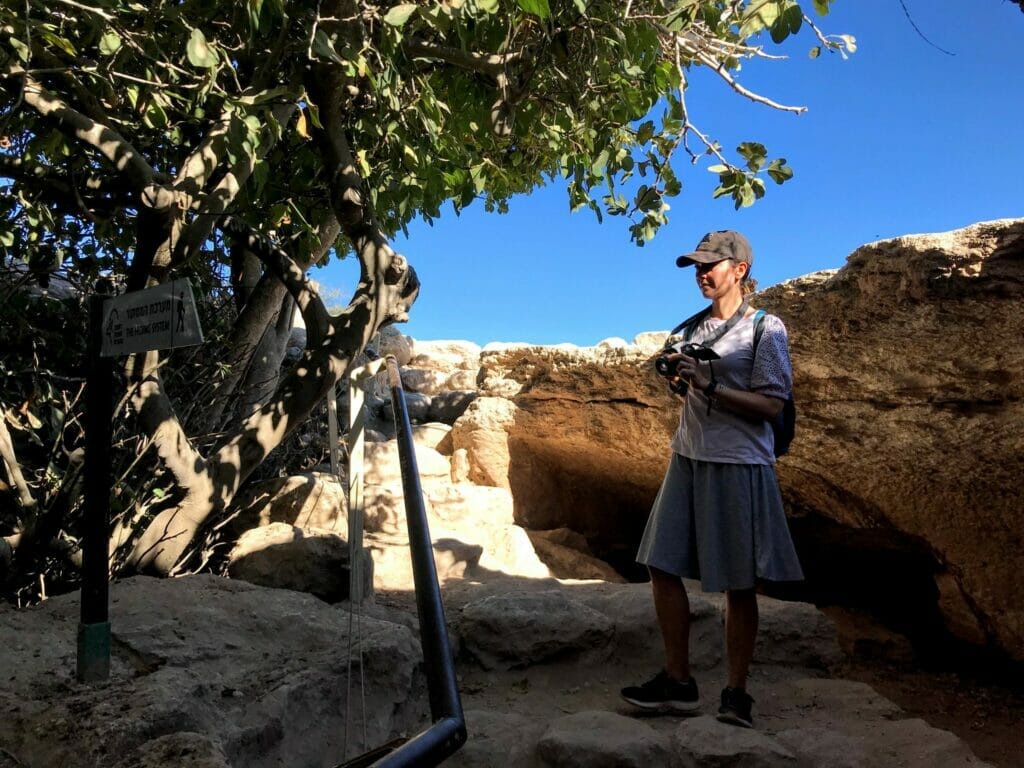

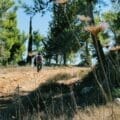
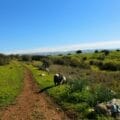
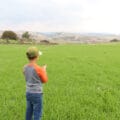


Columbariums were built for either collection of pigeon guano, which was used as fertilizer, or for holding birds used as sacrifices. There is also a theory that the holes held ashes of crematoria burials. I have never heard of pigeons being cultivated on such a huge scale for messenging purposes.
Very interesting. Thank you for your comment!